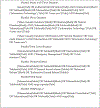Telemedicine Use in Disasters: A Scoping Review
- PMID: 33750505
- PMCID: PMC8442996
- DOI: 10.1017/dmp.2020.473
Telemedicine Use in Disasters: A Scoping Review
Abstract
Disasters have many deleterious effects and are becoming more frequent. From a health-care perspective, disasters may cause periods of stress for hospitals and health-care systems. Telemedicine is a rapidly growing technology that has been used to improve access to health-care during disasters. Telemedicine applied in disasters is referred to as disaster telemedicine. Our objective was to conduct a scoping literature review on current use of disaster telemedicine to develop recommendations addressing the most common barriers to implementation of a telemedicine system for regional disaster health response in the United States. Publications on telemedicine in disasters were collected from online databases. This included both publications in English and those translated into English. Predesigned inclusion/exclusion criteria and a PRISMA flow diagram were applied. The PRISMA flow diagram was used on the basis that it would help streamline the available literature. Literature that met the criteria was scored by 2 reviewers who rated relevance to commonly identified disaster telemedicine implementation barriers, as well as how disaster telemedicine systems were implemented. We also identified other frequently mentioned themes and briefly summarized recommendations for those topics. Literature scoring resulted in the following topics: telemedicine usage (42 publications), system design and operating models (43 publications), as well as difficulties with credentialing (5 publications), licensure (6 publications), liability (4 publications), reimbursement (5 publications), and technology (24 publications). Recommendations from each category were qualitatively summarized.
Keywords: disaster; literature; review; scoping; telehealth; telemedicine.
Figures


References
-
- Shahid W, Xinhai L. A case study of telemedicine for disaster management in underdeveloped remote districts of Balochistan, Pakistan. J Econ Sustain Dev. 2013:4(20).
-
- Patoli AQ. Role of telemedicine in disaster management. https://www.slideserve.com/kara/role-of-telemedicine-in-disaster-management. Accessed February 11, 2021.
Publication types
MeSH terms
Grants and funding
LinkOut - more resources
Full Text Sources
Other Literature Sources
Medical
Miscellaneous

